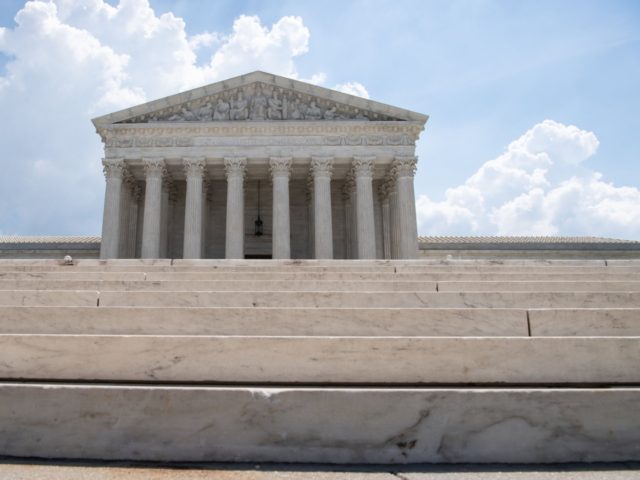The Supreme Court will settle the legal fight over President Barack Obama’s DACA 2012 amnesty — and may boost Donald Trump’s ability to force pro-American concessions from Democrats in 2020.
If the court says Trump’s deputies properly ended DACA in 2017, Trump will gain a major trading card in migration negotiations with Democrats. Trump has repeatedly said he wants to trade DACA for pro-American immigration reforms, despite Democratic claims that ending DACA will force the 800,000 young illegals to return home.
Trump’s opponents have persuaded judges that then-Attorney General Jeff Sessions improperly shut down the DACA program in 2017. Trump has complained that the judges’ interventions reduced his ability to make an immigration deal in 2018.
So far, Trump has not used other legal avenues to end the DACA amnesty, partly because the resulting uproar will weaken his hand during immigration negotiations.
If the Supreme Court decides that Sessions properly shut down the program, the 800,000 DACA illegals will be able to stay if Democrats agree to roll back their efforts to import foreigners into Americans’ blue-collar workplaces, schools, and neighborhoods. The DACA illegals were brought to the United States as children by their parents.
The court’s decision is expected in early 2020, and immigration-reform advocates hope that Justice Neil Gorsuch will tip the decision in favor of Trump.
The sleeper issue in the case is Obama’s decision to also grant work permits to the DACA illegals.
A court in Texas already ruled that Obama’s work-permit decision was illegal, so the top court — likely pressured by Gorsuch — may also strike down the government claim that it has the right to create work permits for foreigners.
But that sleeper legal issue — dubbed “1324a” — could also torpedo similar work-permit awards to foreigners. Those other programs include the Optional Practical Training Program and the H4EAD program which allow at least 300,000 other foreigners to work white-collar jobs in the United States.
Those 300,000 imported visa-workers help suppress wages for American college graduates — and also generate huge revenues for the nation’s university sector.
Business lobbyists want the court to strike down Sessions’ cancellation of DACA because that would help protect their supply of cheap migrant labor, and would also reduce Trump’s ability to force pro-American concessions from the pro-migrant Democrats.
For example, the DACA amnesty is defended by FWD.us, a lobbying group created by West Coast investors to protect their supplies of cheap labor:
FWD.us is trying to defend the establishment’s policy of legally importing 1 million new immigrant workers, consumers, and renters each year, even though roughly 4 million young Americans turn 18 and join the labor market each year.
The 1 million imported workers and renters deflate the value of Americans’ wages and raise their real estate costs, so generating at least $500 billion in extra annual profits for investors.
The case is Regents of the University of California, et al. v. United States Department of Homeland Security, et al., No. 3:17-cv-05211, in the Supreme Court of the United States.
Immigration by the Numbers
Each year, roughly four million young Americans join the workforce after graduating from high school or university.
But the federal government then imports about 1.1 million legal immigrants and refreshes a resident population of roughly 1.5 million white-collar visa workers — including approximately one million H-1B workers — and approximately 500,000 blue-collar visa workers.
The government also prints out more than one million work permits for foreigners, tolerates about eight million illegal workers, and does not punish companies for employing the hundreds of thousands of illegal migrants who sneak across the border or overstay their legal visas each year, despite the rising loss of jobs to automation.
This policy of inflating the labor supply boosts economic growth for investors because it ensures that employers do not have to compete for American workers by offering higher wages and better working conditions.
Flooding the market with cheap, foreign, white-collar graduates and blue-collar labor also shifts enormous wealth from young employees towards older investors, even as it also widens wealth gaps, reduces high-tech investment, increases state and local tax burdens, and hurts children’s schools and college educations. It also pushes Americans away from high-tech careers and sidelines millions of marginalized Americans, including many who are now struggling with fentanyl addictions. The labor policy also moves business investment and wealth from the Heartland to the coastal cities, explodes rents and housing costs, shrivels real estate values in the Midwest, and rewards investors for creating low-tech, labor-intensive workplaces.

COMMENTS
Please let us know if you're having issues with commenting.